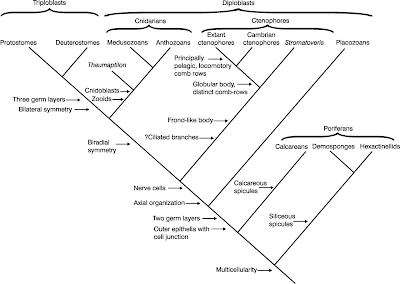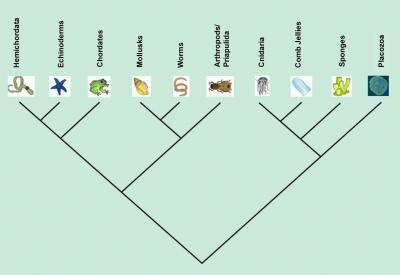I ran into this while reading Gunnell's classic paper on landscape evolution of south India.
The short answer is that the soils are different. But there is a complex geological story behind it. Plantation crops like tea and coffee are big economies in the western Ghats of south India. Plantations are spread over tens of thousands of hectares in the state of Tamil Nadu, Kerela and Karnataka and these estates employ hundreds of thousands of people as tea leaf or coffee bean pickers.
If you look at a profile of the mountains of the western Ghats you will see that they have a step like form. Plateaus or steps alternate with escarpments or steep slopes. Coffee and tea grow on these plateaus. There is a distinct altitudinal control over the distribution of tea and coffee plantations. At altitudes above 2000 m MSL coffee is absent and tea is a monoculture. On plateaus in the altitude range 800 m MSl to 1200 m MSL coffee dominates although tea plantations are also present.
This is because the chemistry of the soils mantling the plateaus is different at different altitude. On the high elevation plateaus (> 2000 m MSL), the soils which go under the broad name bauxite are acidic and contain very high concentration of the mineral Gibbsite. This is a hydrous aluminum oxide. The tea plant Camelia sinensis can deal with this enriched Al content of the soil. Tea has become a monoculture on these highest plateaus.
On the lower tiers of the landscape the soils are more alkaline and contain less amounts of Al and more calcium. These are ideal soil conditions for coffee which dominates these lower elevation plateaus.
I have summarized this relationship between elevation, soils and crop type in the figure below.

Modified from: MantlePlumes.org
I could stop here but the story of why these soils are different is interesting and complex and has to do with how the Western Ghats themselves formed and how the landscape got its distinctive step like appearance.
The important thing to understand is that these soils don't represent one soil forming episode which took place simultaneously at higher and lower levels of the landscape. Instead, these soils are different in age. The soils on the higher plateaus are older than the soils found at lower elevations.
Here's how this might happen. The landscape of the Western Ghats is called polygenetic or polycyclic. This is because this mountain chain was not formed by one continuous episode of uplift but rather by uplift episodes alternating with periods of tectonic stability and intense weathering.
This uplift began in the mid Cretaceous or maybe a little before as the southern supercontinent Gondwanaland split and the Indian fragment rifted away first from Antarctica (130 mya) forming the east coast continental margin and then from Madagascar (88 mya) forming the west coast margin. These rifting events rejuvenated the Precambrian shield areas (old stable parts of continents) of southern India pushing them up ever since slowly and episodically into some of the highest elevated shield areas anywhere in the world.
I won't go into the details behind the forces responsible for the uplift. That is a post on its own. But here is a quick way to understand the step like landscape. During times of active uplift, erosion will dissect the rising land surface into sharp peaks and V shaped valleys. During phases of tectonic quiescence, when there is no active uplift, weathering will bevel the jagged rock surfaces into flat surfaces or peneplains.
If there are multiple episodes of uplift then successively lower levels of crust will be exposed periodically and weathered. As the region gets elevated, younger and younger plateaus form at lower and lower altitudes. In the context of the Western Ghats the peneplain on which tea grows formed in the latest Cretaceous-early Tertiary. It's called surface S1 in geology jargon. The peneplain on which coffee grows is younger and formed in the mid-Tertiary and is named surface S2. So at the time S1 was forming the level of the crust on which S2 formed was not even exposed on the surface. You can think of this as meaning that the lower levels of the landscape you see today did not exist when S1 was forming. It was only during later episodes of uplift and erosion that the surface got dissected further and crustal level S2 was exhumed subsequently weathered into a peneplain.
You can conceptualize this process in the figure below.
 Adapted from : MantlePlumes.org
Adapted from : MantlePlumes.orgHere A and B show a situation where jagged peaks are beveled into a flat planation surface or a peneplain. Situation C shows the polycyclic history of uplift and weathering, forming peneplains at different altitudes.
The bedrock at both levels of the landscape is similar, a combination of charnockite (a hypersthene bearing granulite) and greenstone facies metamorphics and the rainfall patterns are also similar. This supports the idea that the soil chemistry is different because the soils are of different ages. The soils have developed on two distinct generations of land surfaces and do not represent just one episode of soil formation taking place contemporaneously on two levels of the landscape. Because of their greater antiquity, chemical weathering has been acting on the higher soils for a longer period of time and has leached them of Ca and Mg and enriched them in the relatively insoluble Al. The younger soils down below still retain Ca and Mg along with some iron and aluminum. Coffee plants dig that combination and grow well there.
This post series, Geology and Livelihoods explores the link between geology and economies. I try to stay away from the more obvious and well known influence of geology on the oil and gas and mining industries. Instead I am trying to highlight how geological processes influence economies through their control over landscape development, or micro climates, or soil chemistry or groundwater. This influence is less appreciated but is pervasive. Human economies of every type are profoundly influenced by geology and hopefully I will have more stories to tell.
See: Geology and Livelihoods







